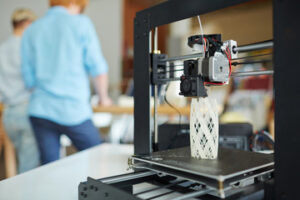Kitchen Remodel involves crucial alterations to the layout and workflow of the space, including expanding storage capacity and improving efficiency. It also addresses aesthetics to transform the overall look of the room.
Start by evaluating your daily functions and how the current kitchen works for you. This will guide your decisions about everything from countertops to faucets. Contact Kitchen Remodel Tacoma now!

The layout of your kitchen determines its functionality and efficiency, as well as how the space flows. Layouts are generally based on one of the following basic shapes: L-Shape, G-Shape, U-Shape, Galley, and Single-Wall. Hybrid kitchen layouts are also available, which provide a tailored balance of aesthetics and functionality based on the needs of the owner.
A popular choice for small spaces, the L-shaped kitchen includes workspaces on two adjacent walls running perpendicular to each other to form an L shape. This design minimizes the distance between the sink, stove, and refrigerator, ensuring the most efficient work triangle possible. If the space allows, consider adding an island to the layout for extra storage and counterspace.
The G-shape layout combines the efficiency of an L-shaped kitchen with the added functionality of a peninsula. This kitchen layout works well when the space opens up to a casual living area, such as a family room or dining area. If you choose this layout, ensure that the entryway is wide enough to manage traffic flow and prevent congestion in the space. In addition, this layout typically involves corner cabinets, which can be difficult to access and may require specialized solutions like lazy susans.
A one-wall kitchen consolidates all countertops, appliances, and cabinets on a single wall, making it an ideal option for narrow rooms. However, a one-wall kitchen can feel cramped and closed in without smart space planning. To make the most of the space, consider installing tall cabinets to the ceiling to maximize storage capacity and utilize specialized storage solutions for items you don’t use frequently, such as drawer dividers for cutlery and utensils or spice racks.
Storage
The right storage solution can turn a chaotic kitchen into an organized, functional and beautiful space. Achieving that level of organization typically involves thoughtfully maximizing all three zones of kitchen storage, and that’s usually best accomplished with the help of a professional.
Whether it’s a pantry with pullout shelves or an island that doubles as a prep station, there are plenty of kitchen storage ideas to consider when planning your remodel. The most effective approach will take into consideration your cooking habits and the overall flow of the room. For instance, placing dishes and glassware storage near the dishwasher or refrigerator makes sense because it’s where you tend to put them when you’re finished.
A cluttered or disorganized kitchen can easily get out of hand, and one of the best ways to prevent it is by ensuring that every dish, glass, and spice jar has its own home. Adding extra storage can be as simple as including clear bins in your pantry or incorporating dividers into drawers where you store plates, bowls, and utensils.
Another great storage idea is to include hooks in a shallow cabinet that faces a mudroom or entryway so that you can hang up bags, coats and umbrellas. This eliminates clutter and provides a handy spot to grab items before you head out the door. In addition, adding a retractable lazy suzan to a corner cabinet can make it easier to reach pots and pans by eliminating the need to bend over. This is especially helpful in tight spaces where tall cabinets may not be an option.
Countertops
Countertops are a key focal point for any kitchen and a great place to express personal style. Updating them with a new surface can refresh the room and even escalate its value. However, there are a lot of factors to consider, from budget to durability. Here are some tips to help you choose the right countertop for your project.
For traditionalists, nothing can beat the classic elegance of natural stone countertops like granite or marble. They pair nicely with ornate cabinetry and elegant fixtures to create a timeless kitchen stage. These countertops are durable and easy to clean, making them ideal for high-traffic areas.
Futurists and modernists favor the sleek, uncluttered look of stainless steel countertops. These countertops are a practical choice for busy kitchens, as they are nonporous and resistant to heat and scratches. They also offer a wide range of color and pattern options to suit your aesthetic preferences.
If you’re an eco-conscious trendsetter, consider recycled glass or concrete countertops. These surfaces are a popular option for contemporary kitchens as they can be recycled and repurposed at the end of their lifecycle. They also work well in a wide range of aesthetic styles, from rustic to industrial.
Wooden countertops are another green option. They can be crafted in a variety of ways, from joined planks to single-wide staves. They are a natural, sustainable material that is hygienic and warm to the touch. They can be oiled or waxed to protect them from water and stains, although this will increase the maintenance requirements. Wooden countertops should be thoroughly cleaned and disinfected after contact with raw meats to ensure hygiene. Adding an accent color to your countertops with wood stools or tea kettles can add a rustic charm to any kitchen.
Appliances
The kitchen is a central hub where families spend most of their time and serves as the space for gatherings with friends and loved ones. It is also where meals are prepared and shared, so it is important to design a functional space that meets your family’s needs. This requires careful planning, from selecting the right appliances to creating a well-organized layout and incorporating all of the essential elements that make up a well-designed kitchen.
Appliances represent a significant share of global energy consumption and emissions. They are responsible for a wide variety of environmental impacts, including air and water pollution, ozone depletion, climate change, and other health hazards. Fortunately, these impacts can be mitigated by improving the efficiency of appliances and switching to low-carbon electricity.
In addition to reducing operating costs and saving energy, choosing appliances that are energy efficient provides significant monetary savings through reduced utility bills over time. These appliances are designed with features that optimize performance and minimize energy use, making them a win-win solution for homeowners and the environment.
Another trend in kitchen appliances is the rise of smart technology. These devices connect to the Internet, allowing users to monitor and control their appliances remotely through smartphones or tablet apps. They can help streamline cooking processes and enhance precision, providing a more interactive culinary experience. However, relying too much on smart appliances may lead to a loss of basic cooking skills, so it’s important to strike a balance between using these devices and maintaining fundamental cooking knowledge. It is also important to consider data privacy and cybersecurity when purchasing smart appliances. Lastly, these devices can be expensive to purchase and maintain, so it is essential to consider these factors before committing to any upgrades.
Lighting
A well-lit kitchen can make a big difference in the way you feel about your space. Whether you are entertaining guests or preparing dinner, lighting options allow you to create a beautiful and functional atmosphere that will help to boost your mood.
Light color, intensity, and wattage are all important factors to consider when choosing kitchen light fixtures. Cooler colors are ideal for workspaces and task areas, while warmer colors are better suited to dining spaces and creating a comfortable atmosphere. Layering your lighting is also important for a balanced design scheme. Mixing ambient, task, and accent lighting can add depth to your kitchen.
Kitchen pendant lighting is a versatile kitchen light idea that can be both decorative and practical. Rather than opting for a single fixture, choose two or more pendants in different sizes and styles to create a more eclectic look. In this kitchen, an assortment of five varying-sized pendants from Rothschild & Bickers adds a touch of personality to the sleek and contemporary space.
Track lighting is another kitchen light idea that allows you to highlight key features and create a more dramatic effect in your space. In this kitchen, a series of track lights are directed upwards to illuminate the ceiling and emphasize the architecture of the space.
Having an updated kitchen can be a major selling point when you are looking to buy or sell your home. Prospective homebuyers often prioritize modernized kitchens and upgrading your kitchen is an affordable option to increase the value of your property. If you are considering a kitchen remodel, work with a reputable and experienced team of professionals to ensure that your project runs smoothly and efficiently from start to finish.








